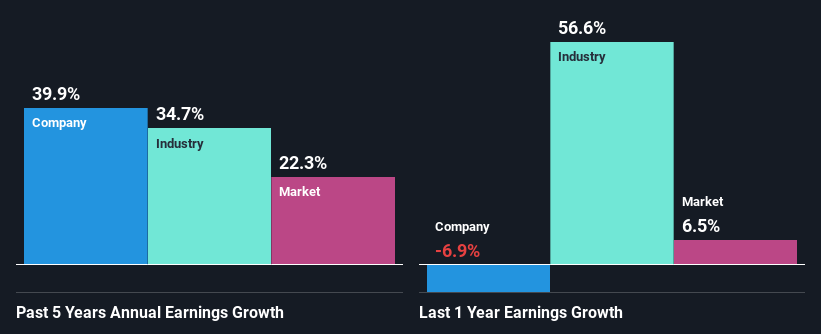Gear Energy Ltd. (TSE:GXE) Stock Has Shown Weakness Lately But Financials Look Strong: Should Prospective Shareholders Make The Leap?
Gear Energy (TSE:GXE) has had a rough three months with its share price down 18%. However, a closer look at its sound financials might cause you to think again. Given that fundamentals usually drive long-term market outcomes, the company is worth looking at. Specifically, we decided to study Gear Energy's ROE in this article.
Return on equity or ROE is an important factor to be considered by a shareholder because it tells them how effectively their capital is being reinvested. Simply put, it is used to assess the profitability of a company in relation to its equity capital.
See our latest analysis for Gear Energy
How Is ROE Calculated?
The formula for return on equity is:
Return on Equity = Net Profit (from continuing operations) ÷ Shareholders' Equity
So, based on the above formula, the ROE for Gear Energy is:
30% = CA$75m ÷ CA$252m (Based on the trailing twelve months to December 2022).
The 'return' is the yearly profit. One way to conceptualize this is that for each CA$1 of shareholders' capital it has, the company made CA$0.30 in profit.
What Is The Relationship Between ROE And Earnings Growth?
So far, we've learned that ROE is a measure of a company's profitability. Based on how much of its profits the company chooses to reinvest or "retain", we are then able to evaluate a company's future ability to generate profits. Assuming all else is equal, companies that have both a higher return on equity and higher profit retention are usually the ones that have a higher growth rate when compared to companies that don't have the same features.
A Side By Side comparison of Gear Energy's Earnings Growth And 30% ROE
To begin with, Gear Energy has a pretty high ROE which is interesting. Second, a comparison with the average ROE reported by the industry of 23% also doesn't go unnoticed by us. So, the substantial 40% net income growth seen by Gear Energy over the past five years isn't overly surprising.
Next, on comparing Gear Energy's net income growth with the industry, we found that the company's reported growth is similar to the industry average growth rate of 35% in the same period.
Earnings growth is a huge factor in stock valuation. The investor should try to establish if the expected growth or decline in earnings, whichever the case may be, is priced in. This then helps them determine if the stock is placed for a bright or bleak future. Is GXE fairly valued? This infographic on the company's intrinsic value has everything you need to know.
Is Gear Energy Making Efficient Use Of Its Profits?
Gear Energy's three-year median payout ratio to shareholders is 8.3%, which is quite low. This implies that the company is retaining 92% of its profits. This suggests that the management is reinvesting most of the profits to grow the business as evidenced by the growth seen by the company.
Along with seeing a growth in earnings, Gear Energy only recently started paying dividends. Its quite possible that the company was looking to impress its shareholders. Upon studying the latest analysts' consensus data, we found that the company's future payout ratio is expected to rise to 120% over the next three years. Therefore, the expected rise in the payout ratio explains why the company's ROE is expected to decline to 11% over the same period.
Summary
Overall, we are quite pleased with Gear Energy's performance. Specifically, we like that the company is reinvesting a huge chunk of its profits at a high rate of return. This of course has caused the company to see substantial growth in its earnings. If the company continues to grow its earnings the way it has, that could have a positive impact on its share price given how earnings per share influence long-term share prices. Remember, the price of a stock is also dependent on the perceived risk. Therefore investors must keep themselves informed about the risks involved before investing in any company. You can see the 2 risks we have identified for Gear Energy by visiting our risks dashboard for free on our platform here.
Have feedback on this article? Concerned about the content? Get in touch with us directly. Alternatively, email editorial-team (at) simplywallst.com.
This article by Simply Wall St is general in nature. We provide commentary based on historical data and analyst forecasts only using an unbiased methodology and our articles are not intended to be financial advice. It does not constitute a recommendation to buy or sell any stock, and does not take account of your objectives, or your financial situation. We aim to bring you long-term focused analysis driven by fundamental data. Note that our analysis may not factor in the latest price-sensitive company announcements or qualitative material. Simply Wall St has no position in any stocks mentioned.
Join A Paid User Research Session
You’ll receive a US$30 Amazon Gift card for 1 hour of your time while helping us build better investing tools for the individual investors like yourself. Sign up here

 Yahoo Finance
Yahoo Finance 
